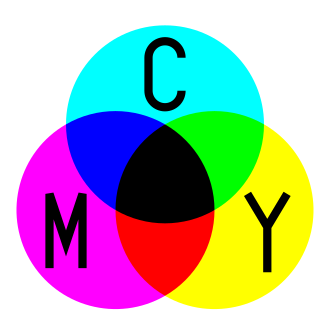Shades of green
Shades of Green refers to the vast spectrum of hues in the color green. These shades can vary in brightness, saturation, and lightness, encompassing a wide range of colors from pale, soft greens to deep, vivid ones. Green is a secondary color that is created by mixing blue and yellow in various proportions. The perception of green is evoked by light having a spectrum dominated by energy with a wavelength of roughly 495–570 nanometers. In the context of color theory, green occupies a significant place, symbolizing nature, renewal, and energy among other concepts.
Varieties of Green
There are numerous shades of green, each with its own unique characteristics and associations. Some of the most well-known shades include:
- Lime Green - A bright, vibrant shade that combines green and yellow tones.
- Olive Green - A darker, more muted green with brown or gray undertones, often associated with military uniforms.
- Emerald - A rich, vivid shade of green, reminiscent of the gemstone from which it takes its name.
- Jade - A representation of the color of the jade gemstone, which can vary from a pale to a deep, rich green.
- Seafoam Green - A light to medium green with a slight blue or gray tint, evoking the color of seafoam.
- Forest Green - A dark, deep green resembling the color of evergreen trees.
- Mint Green - A light, refreshing green with a hint of blue, similar to the color of mint leaves.
- Teal - A medium to deep blue-green color, named after the bird of the same name that has a similar colored stripe on its head.
Cultural and Psychological Significance
Green has a wide range of associations, influenced by cultural, psychological, and even political contexts. It is often linked to nature, growth, and renewal, reflecting the color's omnipresence in the natural environment. In many cultures, green symbolizes hope, health, and fertility. On the psychological front, green is thought to have a calming effect, reducing stress and promoting a sense of tranquility. However, it can also be associated with envy or illness in some contexts, as evidenced by phrases like "green with envy" or the use of green to depict sickness in cartoons.
Use in Design and Art
In art and design, green plays a crucial role due to its versatility and the wide range of emotions it can convey. It is a popular choice in interior design for creating a calming and refreshing atmosphere. In graphic design, different shades of green can be used to signify eco-friendliness, organic products, or to evoke a sense of balance and stability. Artists have historically used green to represent landscapes, nature, and as a symbol of fertility and rebirth.
Conclusion
The shades of green are as varied as they are numerous, each carrying its own set of meanings and associations. From the soft hues of mint and seafoam to the deep tones of forest and emerald, green encompasses a broad spectrum of visually striking colors that play a significant role in our visual and cultural landscapes.
Transform your life with W8MD's budget GLP-1 injections from $125.
W8MD offers a medical weight loss program to lose weight in Philadelphia. Our physician-supervised medical weight loss provides:
- Most insurances accepted or discounted self-pay rates. We will obtain insurance prior authorizations if needed.
- Generic GLP1 weight loss injections from $125 for the starting dose.
- Also offer prescription weight loss medications including Phentermine, Qsymia, Diethylpropion, Contrave etc.
NYC weight loss doctor appointments
Start your NYC weight loss journey today at our NYC medical weight loss and Philadelphia medical weight loss clinics.
- Call 718-946-5500 to lose weight in NYC or for medical weight loss in Philadelphia 215-676-2334.
- Tags:NYC medical weight loss, Philadelphia lose weight Zepbound NYC, Budget GLP1 weight loss injections, Wegovy Philadelphia, Wegovy NYC, Philadelphia medical weight loss, Brookly weight loss and Wegovy NYC
|
WikiMD's Wellness Encyclopedia |
| Let Food Be Thy Medicine Medicine Thy Food - Hippocrates |
Medical Disclaimer: WikiMD is not a substitute for professional medical advice. The information on WikiMD is provided as an information resource only, may be incorrect, outdated or misleading, and is not to be used or relied on for any diagnostic or treatment purposes. Please consult your health care provider before making any healthcare decisions or for guidance about a specific medical condition. WikiMD expressly disclaims responsibility, and shall have no liability, for any damages, loss, injury, or liability whatsoever suffered as a result of your reliance on the information contained in this site. By visiting this site you agree to the foregoing terms and conditions, which may from time to time be changed or supplemented by WikiMD. If you do not agree to the foregoing terms and conditions, you should not enter or use this site. See full disclaimer.
Credits:Most images are courtesy of Wikimedia commons, and templates, categories Wikipedia, licensed under CC BY SA or similar.
Contributors: Prab R. Tumpati, MD





